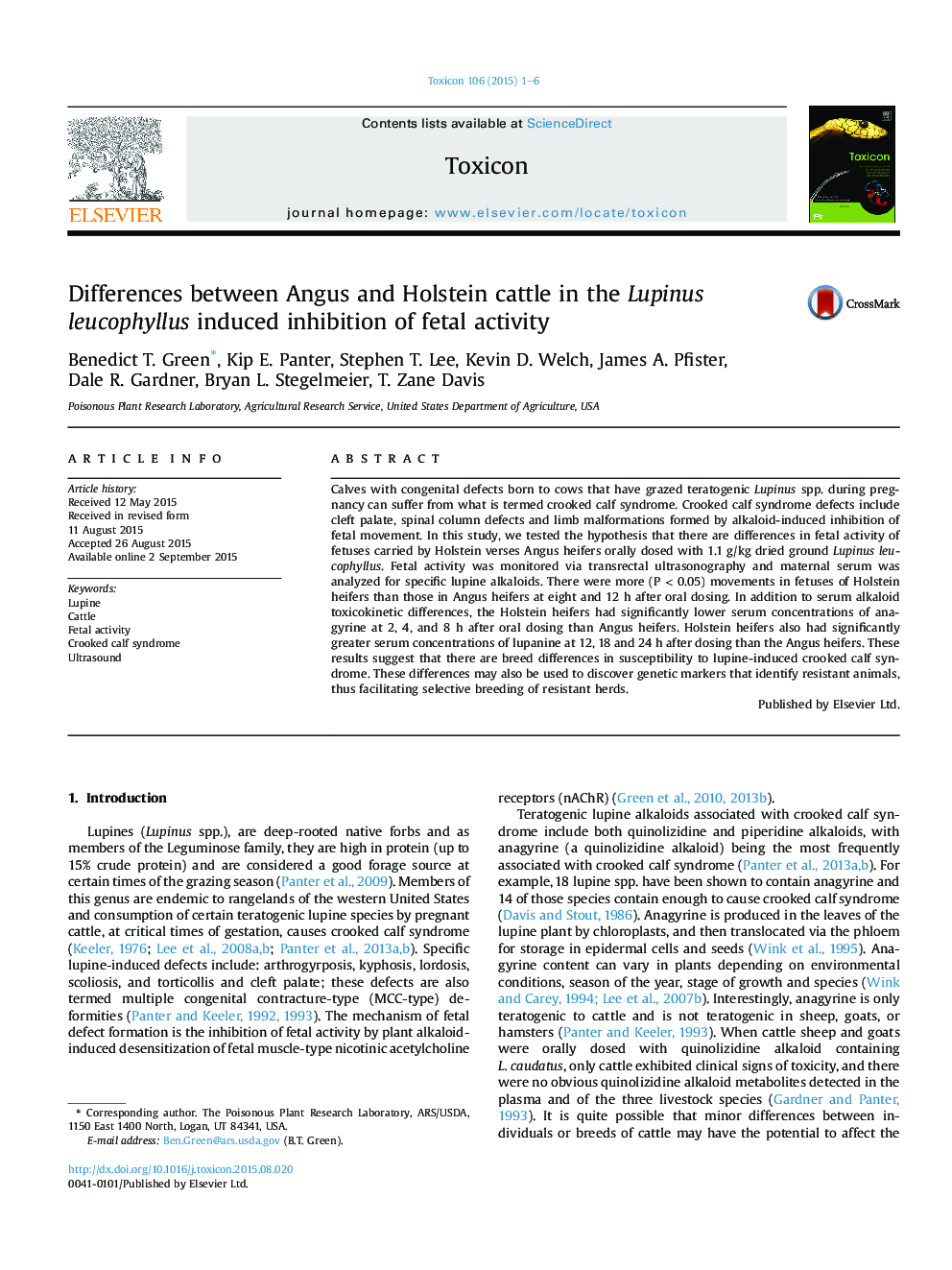| Article ID | Journal | Published Year | Pages | File Type |
|---|---|---|---|---|
| 2064264 | Toxicon | 2015 | 6 Pages |
•Pregnant Angus and Holstein heifers were orally dosed with 1.1 g/kg dried ground Lupinus leucophyllus.•Fetal activity was monitored via transrectal ultrasonography and maternal serum was analyzed for the lupine alkaloids.•There were significantly more fetal movements in Holstein heifers at eight and 12 h after oral dosing.•Holstein heifers had significantly lower serum concentrations of anagyrine at 2, 4, and 8 h after oral dosing.•Holstein heifers had significantly greater serum concentrations of lupanine at 12, 18 and 24 h after dosing.
Calves with congenital defects born to cows that have grazed teratogenic Lupinus spp. during pregnancy can suffer from what is termed crooked calf syndrome. Crooked calf syndrome defects include cleft palate, spinal column defects and limb malformations formed by alkaloid-induced inhibition of fetal movement. In this study, we tested the hypothesis that there are differences in fetal activity of fetuses carried by Holstein verses Angus heifers orally dosed with 1.1 g/kg dried ground Lupinus leucophyllus. Fetal activity was monitored via transrectal ultrasonography and maternal serum was analyzed for specific lupine alkaloids. There were more (P < 0.05) movements in fetuses of Holstein heifers than those in Angus heifers at eight and 12 h after oral dosing. In addition to serum alkaloid toxicokinetic differences, the Holstein heifers had significantly lower serum concentrations of anagyrine at 2, 4, and 8 h after oral dosing than Angus heifers. Holstein heifers also had significantly greater serum concentrations of lupanine at 12, 18 and 24 h after dosing than the Angus heifers. These results suggest that there are breed differences in susceptibility to lupine-induced crooked calf syndrome. These differences may also be used to discover genetic markers that identify resistant animals, thus facilitating selective breeding of resistant herds.
Graphical abstractFigure optionsDownload full-size imageDownload as PowerPoint slide
